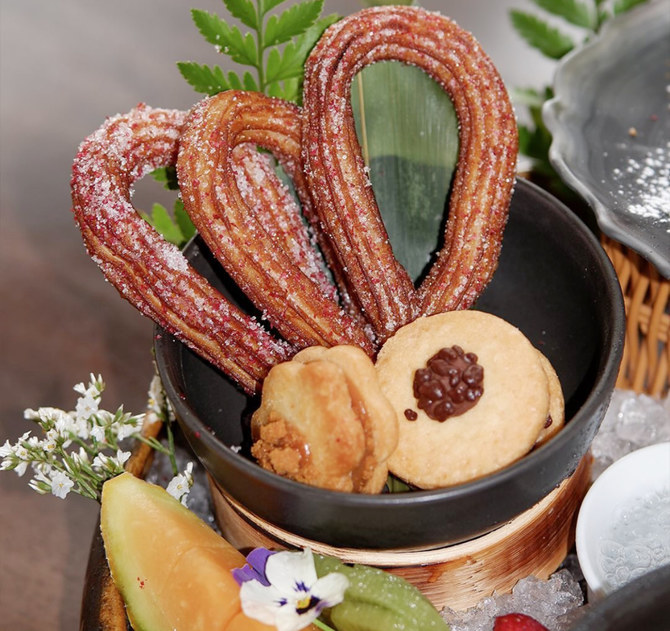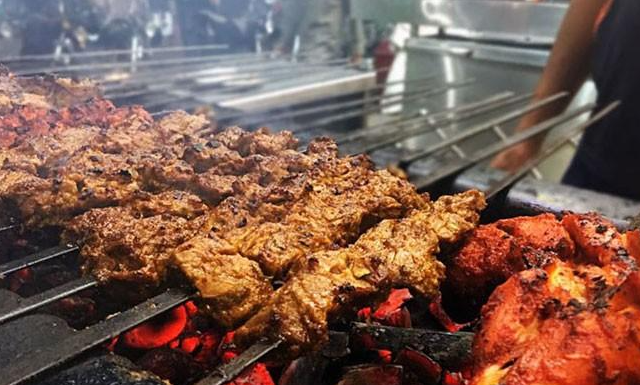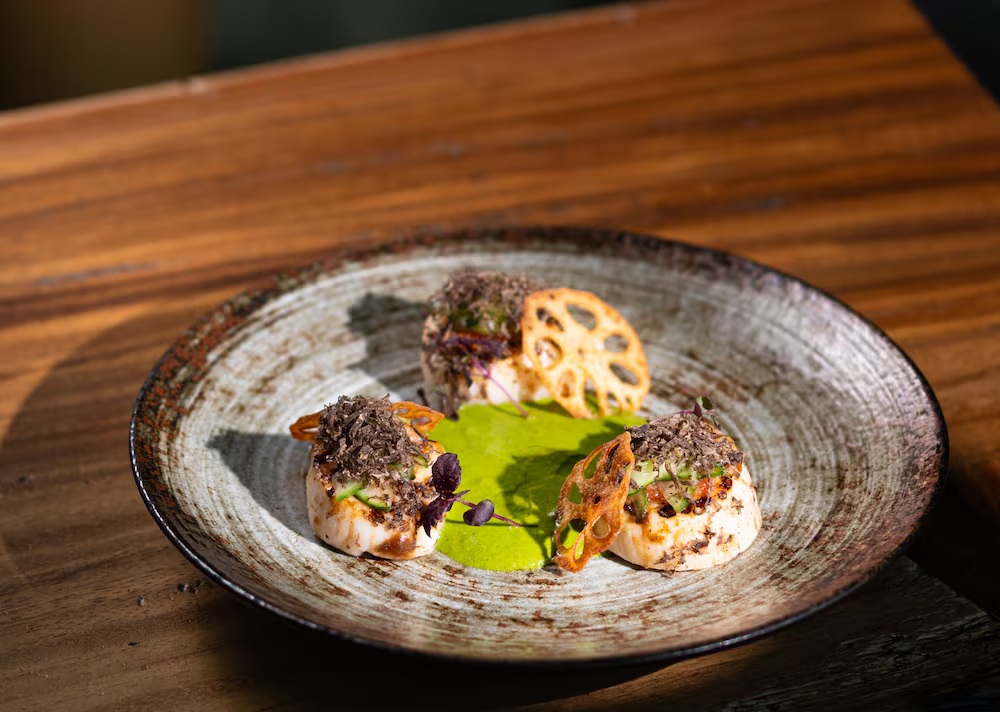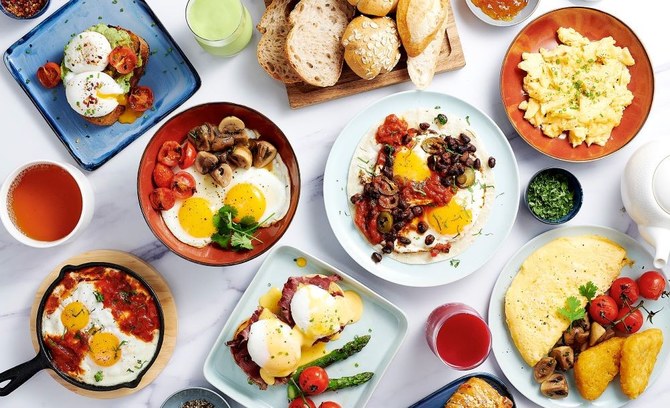Felicity Cloake
This gloriously aromatic stir-fry is the Thai equivalent “of a sandwich or a burger”, says chef and YouTube star Pailin Chongchitnant. “Something quick, easy and ubiquitous that lots of people have for lunch.” The Thai restaurant chain Rosa’s describes it as “something of a national dish … we sometimes call it ‘no idea’, because if you have no idea what to order, you often just order this – it’s so good, you don’t even have to think about it”.
Often served over rice, and with a deep-fried egg on top (a one-dish meal food writer Kay Plunkett-Hogge calls “one of my favourite things to eat in the world”), like much street food, it’s almost as quick to prepare as it is to eat. As writer and cook Leela Punyaratabandhu explains, once you’ve tracked down some holy basil, pad kra pao “is very easy to make; to ruin it, you have to try pretty hard”. Sounds good to me.
The meat

Leela Punyaratabandhu’s pad kra pao: don’t even think of leaving out Thai holy basil. All thumbnails by Felicity.
Chef David Thompson’s book of Thai Street Food informs me that pad kra pao is a relatively recent addition to the culinary scene, and that, although “beef was probably the first meat to be used, now minced chicken or pork, whole prawns or scored squid, even fish dumplings, are cooked in this way”. And in her book Baan, Plunkett-Hogge adds “duck, tofu, mushrooms, you name it” to the list of possibilities: “You can even use moo grop [crispy pork belly].”
I try recipes using pork, beef (both lean and fatty cuts) and chicken, both breast, as Punyaratabandhu suggests on her blog She Simmers, and thigh, because there are few occasions on which it isn’t the superior choice. My conclusions: nothing cooked in this way is ever wasted, but whatever you go for, you’re better off either chopping it finely, as Punyaratabandhu recommends – “you get a better texture that way” – or asking your butcher for coarsely ground mince, and ideally something with a bit of fat especially if you opt for Thompson’s simpler version of the dish, described below.
Rosa’s uses sliced meat, but I’m with Chongchitnant, who describes ground (minced) meat as “the most classic and the most ‘street’ way you’ll find pad kra pao”. You can use thinly sliced pieces of meat instead, but “I really think it tastes better with ground meat, so give it a go.”
The seasonings

Kay Plunkett-Hogge’s version: you got a problem with her recipe? Take it up with the stall in Thailand she nicked it from.
Sharp little bird’s eye chillies and garlic are both mandatory here, and Plunkett-Hogge, Rosa’s and Chongchitnant also add a mild red chilli, which lends both colour and sweetness to the dish. Thompson writes that, “strangely, for this dish, I find that mincing or chopping the garlic and chillies gives a better flavour than pounding them”. I agree: leaving them more intact seems to leave more of their flavour intact, too.Advertisement
So far, so uncontroversial (I hope) – but, to quote Punyaratabandhu, “it must be pointed out that purists maintain that oyster sauce and soy sauce — two ingredients that are almost always added to pad kra pao — should not be used … However, chances are the pad kra pao which you have fallen in love with isn’t made by purists.” Plunkett-Hogge, noting Thompson’s preference “for sauce seasoned with fish sauce alone”, explains that “there are no Larousse-like standard recipe texts in Thai cooking. Instead, as with Italian food, there’s enormous variation not only regionally but from cook to cook”.

David Thompson’s pad kra pao: just fish sauce, sugar and water as seasonings.
So, it’s very much up to you; I absolutely adore Thompson’s simple version with fish sauce, sugar and water, which lets the meat take centre stage, but I suspect that’s as much to do with the intensely flavourful beef I used in obedience to his instructions to choose something “with some fat attached, such as flank, rump or shoulder”. If you’re dealing with something leaner, such as, say, squid or chicken breast, you may also want to include a dash of light and sweet soy sauce and a glug of oyster sauce to give it a helping hand in the umami department.
Plunkett-Hogge messages me from her home in northern Thailand, where she now runs a cookery school, to suggest a couple of variations: “Next time, replace fresh chillies with some dried red ones… it’s also excellent with some fresh green peppercorns thrown in.” Truly, this is a dish one could never tire of.
The vegetables
Again, mildly contentious, but several recipes incorporate chopped onion or shallot, while Plunkett-Hogge, Rosa’s and Chongchitnant all use chopped green beans, which, when lightly stir-fried, add a welcome fresh crunch to proceedings. Plunkett-Hogge picked up her recipe from a roadside cook in Kanchanaburi, so if you have a problem with this, please refer it to them.
The herbs

Rosa’s Thai restaurant’s dish, which they sometimes call “no idea” – the dish for undecided customers.
The toughest part of this dish is likely to be sourcing holy basil, which is tricky to come by in the west (or in London, at least; I finally find some in a Thai supermarket in Camden). Bad news from Punyaratabandhu: “If this dish could talk, the only thing it would beg of you is that you use the ingredient without which it cannot be what it is: holy basil (bai kra-pao )).” Not to be confused with the aniseedy Thai basil, which can be picked up in many supermarkets these days, holy basil has larger, spikier leaves and a distinctive peppery, slightly citrus-bitter flavour.
Without holy basil, you can’t make holy basil stir-fry, but you can make something equally delicious. Indeed, Chongchitnant writes: “I have found that regular Italian basil actually has a more similar flavour to holy basil than Thai basil does, so that will work as well.” I’m not sure what the Thai for Italian basil is, but, thanks to Punyaratabandhu, I know that a Thai sweet basil stir-fry is a pad bai horapa – different, but (I think) just as good.Advertisement
Rosa’s add sliced lime leaves to their version, which lend a wonderful fragrance to the dish, but it’s one that distracts from the basil, so I’m going to leave them out.
Accompaniments

Pailin Chongchitnant’s pad kra pao: ‘quick, easy, and ubiquitous that lots of people have for lunch’.
If you like things extra-hot, serve the dish with Thompson’s sliced chillies in fish sauce on the side. Either way, I’d strongly recommend pairing it with a fried egg and a pile of steamed rice. As Chongchitnant says, “The creaminess of the slightly runny egg mellows out the strong, spicy flavour of the stir-fry, and that’s why it’s such a winning combo.” I couldn’t put it better myself.
Perfect pad kra pao
Prep 5 min
Cook 7 min
Serves 2
4-8 bird’s eye chillies
4 garlic cloves, peeled
1 large mild red chilli
100g green beans (optional)
Neutral oil, for frying
2 eggs (optional)
200g coarsely minced or finely chopped protein of your choice – if using meat, go for a fairly fatty cut
2 tbsp fish sauce
1 pinch caster sugar
1 tbsp soy sauce (optional)
1 tbsp oyster sauce (optional)
½ tbsp kecap manis or black soy sauce (optional)
1 large handful holy basil leaves
Steamed rice, to serve

Trim and finely chop the small chillies and garlic. Deseed and cut the mild chilli into thin strips. Chop the green beans, if using, into roughly 2cm lengths.

Fry the eggs, if using. Heat a wok on a high flame, add enough oil generously to coat the bottom, then crack in the eggs and fry, basting them in the hot oil, until puffy with crisp whites and runny yolks. Carefully lift out and set aside on a warm plate, and leave about two tablespoons of oil in the wok.

Put the wok back on a high flame, turn down the heat slightly, then fry the finely chopped chillies and garlic for a few seconds, stirring so they don’t burn, until aromatic.
Add the protein, stir vigorously to break up any clumps and fry for a minute or so, until just cooked through.

Add the fish sauce, sugar and the other sauces, if using (if you’re sticking with just fish sauce, add a good splash of water instead). Stir in the beans and sliced chilli, and stir-fry for another minute or so, until the liquid comes to a simmer.

Stir through the basil leaves to wilt, then divide between two plates, top each portion with an egg and serve with rice.
Courtesy: theguardian








